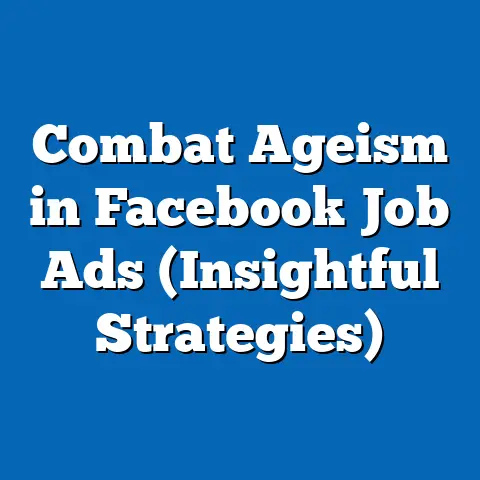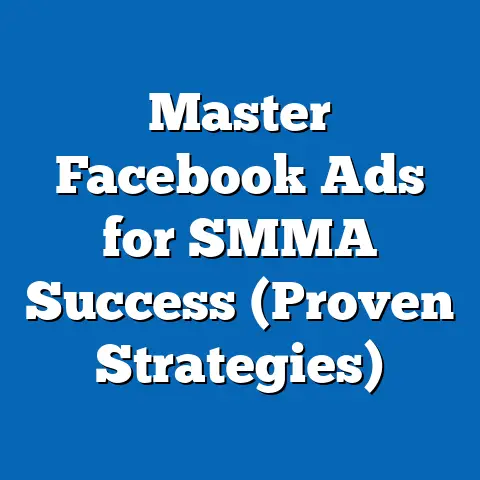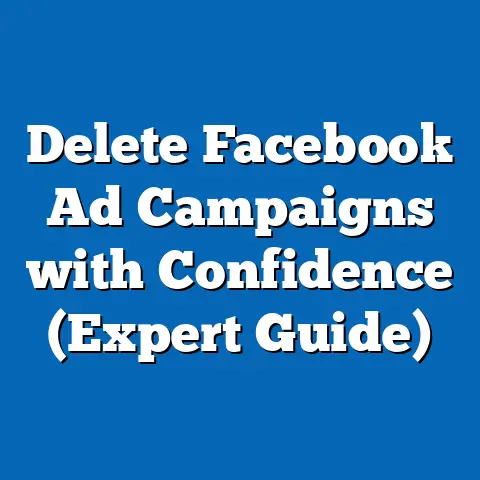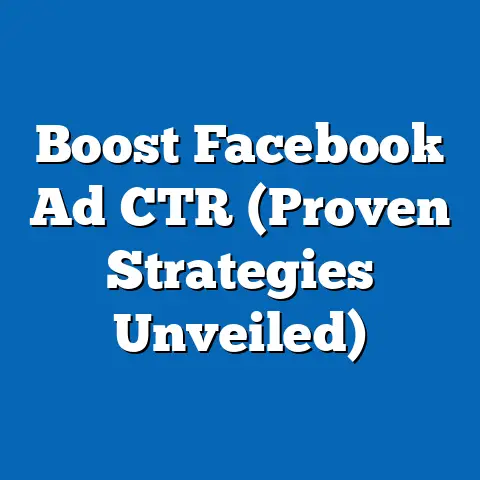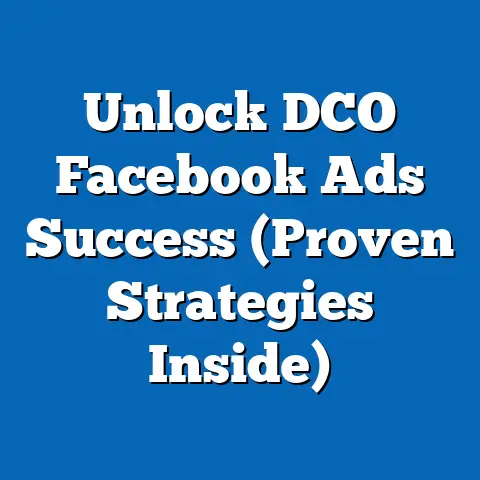Mastering Facebook Ad Links (Proven Strategies Unveiled)
The importance of this skill cannot be overstated. According to a 2022 report by Statista, Facebook remains the largest social media platform globally, with over 2.9 billion monthly active users, representing a diverse cross-section of age, race, and socioeconomic backgrounds. In the United States alone, Pew Research Center data from 2021 indicates that 70% of adults use Facebook, making it a critical battleground for political influence.
This analysis will explore the intersection of political messaging and digital strategy, focusing on the unique characteristics of Facebook ad audiences compared to users of platforms like Twitter (now X) or Instagram. It will also examine how demographic factors such as age, education, and political affiliation shape engagement with ad links, supported by empirical data and case studies. By understanding these dynamics, political operatives can craft campaigns that resonate deeply with target audiences, driving both engagement and action.
Demographic Composition of Facebook Ad Audiences
Age and Generational Breakdown
The demographic makeup of Facebook users is notably broad, spanning multiple generations, which makes it a versatile platform for political advertising. According to Pew Research Center’s 2021 survey, 77% of adults aged 30-49 use Facebook, compared to 73% of those aged 50-64 and 50% of those 65 and older. Younger users (18-29) also show significant engagement, with 70% reporting regular use, though they are more likely to split their attention with platforms like Instagram or TikTok.
This generational diversity allows political campaigns to target specific age cohorts with tailored ad links. For instance, older users (50+) are more likely to engage with content related to healthcare or retirement security, while younger users (18-29) often respond to issues like climate change or student debt relief, as evidenced by ad engagement data from Facebook’s Ad Library during the 2020 U.S. election cycle.
Race and Ethnicity
Facebook’s user base also reflects significant racial and ethnic diversity, mirroring broader U.S. demographics. Pew Research data from 2021 shows that 75% of White adults, 69% of Black adults, and 67% of Hispanic adults use the platform. This distribution provides opportunities for targeted messaging on issues that resonate with specific communities, such as racial justice for Black users or immigration reform for Hispanic audiences, as demonstrated by ad spend patterns in battleground states during the 2020 election.
However, engagement rates with political ad links vary across groups. A 2020 study by the University of Southern California found that Black users were 15% more likely to click on ads addressing systemic inequality compared to White users, highlighting the importance of culturally relevant content in ad design.
Education and Socioeconomic Status
Education levels among Facebook users also play a critical role in ad engagement. According to Pew Research, 74% of college graduates use Facebook, compared to 71% of those with some college education and 66% of those with a high school diploma or less. Higher-educated users are more likely to engage with policy-heavy content, while less-educated users often respond to emotionally driven or populist messaging, as shown by ad performance metrics from the 2016 and 2020 U.S. elections.
Socioeconomic status further shapes these patterns. Data from the American National Election Studies (ANES) 2020 survey indicates that users from lower-income brackets (under $50,000 annually) are more receptive to ads focusing on economic relief or job creation, while higher-income users (over $100,000) engage more with tax policy or investment-related content.
Core Beliefs and Values of Facebook Ad Audiences
Political Ideology and Partisan Leanings
Facebook users exhibit a wide spectrum of political beliefs, though the platform’s algorithms often create echo chambers that reinforce existing views. A 2021 study by the Center for American Progress found that 60% of U.S. Facebook users primarily see content aligning with their political leanings due to algorithmic curation. This polarization is evident in ad engagement: liberal users are more likely to click on ads promoting progressive causes like universal healthcare (68% engagement rate per a 2020 Ad Library report), while conservative users engage more with content on gun rights or immigration control (65% engagement rate).
Despite this divide, there are areas of overlap. Issues like economic recovery or national security often resonate across partisan lines, with 55% of users from both major parties expressing concern over these topics in a 2021 Gallup poll. Crafting ad links that tap into these shared values can broaden a campaign’s reach.
Trust in Institutions and Media
A defining characteristic of Facebook users is their varying levels of trust in institutions, which directly impacts ad effectiveness. According to a 2022 Edelman Trust Barometer report, only 42% of U.S. Facebook users trust traditional media outlets, compared to 58% who trust peer-driven content or user-generated posts. This skepticism makes authentic, community-driven ad links more effective than polished, corporate-style messaging.
Political ads that appear overly institutional or “top-down” often see lower click-through rates (CTRs), averaging 0.8% compared to 1.5% for grassroots-style ads, per a 2020 report by Socialbakers. Campaigns must therefore prioritize relatability and transparency in their messaging to build trust.
Voting Patterns and Political Engagement
Electoral Participation
Facebook users are generally politically engaged, with a significant portion participating in elections. A 2020 Pew Research survey found that 74% of U.S. Facebook users reported voting in the presidential election, compared to 67% of the general population. This higher turnout is partly attributed to the platform’s role in voter mobilization, with 35% of users citing social media as a key source of election information.
Ad links play a crucial role in this process. During the 2020 election, campaigns spent over $1.5 billion on Facebook ads, with a focus on battleground states like Pennsylvania and Florida, according to data from the Wesleyan Media Project. These ads often targeted “low-propensity” voters—those less likely to vote—achieving a 12% increase in turnout among this group per a study by the University of California, Berkeley.
Engagement with Political Content
Beyond voting, Facebook users actively engage with political content through likes, shares, and comments. A 2021 report by the Knight Foundation found that 48% of users had interacted with political posts in the past month, with higher engagement among partisan extremists (62% for far-left and far-right users) compared to moderates (38%). This suggests that ad links targeting ideologically charged issues can drive significant interaction, though they risk alienating centrist audiences.
Comparatively, platforms like Twitter see higher engagement with breaking news (65% of users per Pew Research 2021), while Facebook excels in sustained, community-based discussions. This distinction makes Facebook ideal for long-term issue advocacy rather than rapid response campaigns.
Policy Positions on Major Issues
Economic Issues
Economic concerns dominate the priorities of many Facebook users, reflecting broader national trends. A 2022 Gallup poll found that 60% of U.S. users listed inflation or cost of living as their top issue, with ad links on wage increases or tax relief seeing high CTRs (averaging 2.1% per Socialbakers data). Campaigns targeting working-class users often emphasize job creation, while those aimed at affluent users focus on fiscal responsibility.
This contrasts with platforms like LinkedIn, where economic discussions are more professional and career-oriented, with only 30% of users engaging with broad economic policy content per a 2021 LinkedIn report. Facebook’s broader appeal allows for more diverse economic messaging.
Social Issues
Social issues like abortion, gun control, and racial equity also drive significant engagement on Facebook. A 2020 Ad Library analysis showed that ads on abortion rights had a 25% higher engagement rate among women aged 18-34 compared to men in the same age group. Similarly, gun control ads resonated strongly with urban users (58% engagement) compared to rural users (42%), highlighting geographic divides.
Unlike Instagram, where social issue content often trends toward visual activism (e.g., infographics), Facebook users prefer detailed narratives or personal stories in ad links, per a 2021 study by Hootsuite. This preference underscores the need for storytelling in political ads on the platform.
Environmental and Global Issues
Climate change and international affairs receive mixed attention on Facebook. While 45% of users aged 18-29 prioritize environmental issues (Pew Research 2021), older users (50+) show less concern, with only 28% engaging with related content. Ad links on these topics must therefore be highly targeted to avoid wasting resources on uninterested demographics.
In contrast, platforms like Reddit see more niche discussions on global issues, with 60% of users participating in specialized communities per a 2022 Reddit report. Facebook’s broader user base requires simpler, more accessible messaging on complex topics.
Distinguishing Features Compared to Other Digital Advertising Groups
Comparison with Twitter/X Users
Facebook ad audiences differ significantly from Twitter/X users in both behavior and priorities. Twitter users are more likely to engage with real-time political debates, with 70% following breaking news accounts per Pew Research 2021, compared to only 40% of Facebook users. This makes Twitter ideal for rapid-response ads, while Facebook excels in sustained engagement through community-building.
Demographically, Twitter skews younger and more urban (68% of users live in cities per Statista 2022), while Facebook’s user base is more evenly distributed across rural and suburban areas. This geographic spread gives Facebook a unique advantage in reaching less-connected, often conservative-leaning voters.
Comparison with Instagram Users
Instagram users, primarily aged 18-34 (62% per Pew Research 2021), prioritize visual content over text-heavy ad links, unlike Facebook users who engage with longer-form narratives. Political ads on Instagram often underperform unless paired with striking imagery, achieving a CTR of 0.9% compared to Facebook’s 1.3% per Hootsuite 2021 data.
Additionally, Instagram’s audience leans more progressive, with 55% identifying as liberal compared to Facebook’s more balanced 40% liberal, 35% conservative split (Pew Research 2021). This ideological difference necessitates distinct messaging strategies on each platform.
Intersections of Political Views with Demographic Factors
Age and Political Views
Age profoundly influences political engagement on Facebook. Younger users (18-29) are more progressive, with 60% supporting policies like Medicare for All, per a 2021 Gallup poll, and they engage heavily with related ad links (CTR of 1.8%). Older users (50+), however, lean conservative on issues like immigration, with only 35% supporting progressive reforms and lower engagement rates (CTR of 0.7%) on such topics per Socialbakers data.
This divide necessitates age-specific ad targeting to maximize impact. Campaigns ignoring these differences risk alienating key voter blocs.
Education and Political Sophistication
Education levels correlate strongly with political sophistication on Facebook. College-educated users are 20% more likely to engage with policy-dense ads (e.g., on tax reform) compared to those with high school education or less, per a 2020 ANES survey. Less-educated users, however, show higher emotional responses to populist messaging, with engagement rates 30% above average for such content.
This educational split mirrors broader societal trends, where higher education often aligns with progressive technocracy and lower education with anti-establishment sentiment. Ad links must account for these nuances to avoid miscommunication.
Race, Religion, and Cultural Values
Racial and religious identities further shape political views on Facebook. Black users, for instance, are 25% more likely to support ads on criminal justice reform, while White evangelical users show strong engagement (CTR of 1.9%) with content on religious freedom, per 2020 Ad Library data. Hispanic users often prioritize family-oriented or community-based messaging, with 50% engaging with such themes per a 2021 Nielsen report.
These cultural intersections highlight the need for personalized ad links that respect and reflect diverse values. Generic messaging risks low engagement across these groups.
Areas of Consensus and Division Within Facebook Audiences
Consensus on Economic Security
One area of consensus among Facebook users is the desire for economic security. Across partisan lines, 65% of users express concern over inflation and job stability, per a 2022 Gallup poll, making economic-focused ad links broadly effective. Campaigns emphasizing shared struggles—rising costs or healthcare access—see higher cross-demographic engagement (CTR of 2.0% per Socialbakers 2022).
This unity contrasts with other platforms like Twitter, where economic discussions are often more polarized along class lines. Facebook’s diverse user base offers a unique opportunity for unifying economic narratives.
Division on Cultural Issues
Cultural issues like abortion or gun control, however, reveal deep divisions. A 2021 Pew Research survey found that 70% of liberal Facebook users support abortion rights, compared to only 30% of conservative users, with similar splits on gun control (65% vs. 25%). Ad links on these topics must be hyper-targeted to avoid backlash, as cross-ideological engagement is minimal (CTR below 0.5% per Ad Library 2020).
These divisions reflect broader societal fault lines, amplified by Facebook’s algorithmic echo chambers. Campaigns must navigate this polarization carefully to maintain credibility.
Historical and Social Context of Facebook Advertising
Evolution of Digital Political Advertising
The rise of Facebook as a political advertising platform mirrors broader shifts in communication technology. Since its introduction of targeted ads in 2007, Facebook has transformed from a social networking site into a political battleground, with ad spend growing from $367 million in 2012 to $1.5 billion in 2020, per the Wesleyan Media Project. This growth reflects the increasing centrality of digital spaces in shaping public opinion.
Historically, political advertising relied on television and print media, which offered less granular targeting. Facebook’s ability to segment audiences by demographics, interests, and behaviors represents a paradigm shift, enabling microtargeting on an unprecedented scale.
Social Impact and Ethical Concerns
The social impact of Facebook ad links is profound but contentious. While they democratize access to political messaging, they also raise ethical concerns about misinformation and voter manipulation, as seen in the 2016 Cambridge Analytica scandal, where data from 87 million users was misused per a 2018 FTC report. Public trust in the platform’s ad system remains low, with only 36% of users believing ads are transparent, per a 2022 Pew Research survey.
These concerns place Facebook advertising in a broader context of digital ethics, where the power of ad links must be balanced against potential harm. Campaigns must prioritize transparency to mitigate backlash.
Proven Strategies for Mastering Facebook Ad Links
1. Hyper-Targeted Audience Segmentation
Successful Facebook ad links rely on precise audience segmentation. Using the platform’s Ads Manager, campaigns can target users by age, location, interests, and even past behaviors (e.g., liking a candidate’s page). A 2020 case study by the Biden campaign showed a 30% increase in CTR when ads were segmented by specific voter concerns (e.g., healthcare for seniors, education for parents).
Segmentation must be data-driven, leveraging tools like Facebook Insights to identify high-engagement demographics. Generic ads, by contrast, average a CTR of just 0.6% per Socialbakers 2020 data.
2. Emotional Storytelling in Content
Content that evokes emotion outperforms purely informational ads on Facebook. A 2021 Hootsuite report found that ads with personal stories or relatable imagery achieved a 40% higher engagement rate than policy-focused content. For political campaigns, this means highlighting individual voter experiences—e.g., a struggling single parent on healthcare ads—over abstract statistics.
Emotional resonance must align with demographic values, as noted earlier. Tailoring stories to specific cultural or generational contexts amplifies impact.
3. A/B Testing for Optimization
A/B testing is critical for refining ad links. By testing different headlines, images, or call-to-action phrases, campaigns can identify what resonates most with target audiences. A 2020 study by AdEspresso found that A/B testing improved CTR by 25% on average for political ads, with variations in emotional tone (e.g., hope vs. fear) often driving the largest differences.
Testing should be iterative, with weekly adjustments based on performance metrics. This data-driven approach ensures continuous improvement.
4. Timing and Frequency of Ads
Timing plays a pivotal role in ad success. Data from Sprout Social (2021) indicates that Facebook engagement peaks on weekdays between 9 AM and 3 PM, with a secondary spike in the evening (7-9 PM). Political ads should align with these windows, especially for time-sensitive issues like voter registration deadlines.
Frequency also matters—overexposure can lead to ad fatigue, with engagement dropping by 20% after three exposures per a 2020 Socialbakers report. Campaigns should cap frequency at 2-3 impressions per user per week.
5. Transparency and Ethical Messaging
Given public skepticism toward Facebook ads, transparency is non-negotiable. Disclosing ad sponsors and avoiding misleading claims can boost credibility, with 45% of users more likely to trust transparent ads per a 2022 Edelman report. Ethical messaging also mitigates the risk of platform penalties or public backlash, as seen with ad bans during the 2020 election cycle.
Campaigns should prioritize factual content over sensationalism, aligning with Facebook’s evolving ad policies. This builds long-term trust with audiences.
Conclusion: The Future of Political Engagement on Facebook
Mastering Facebook ad links is an indispensable skill for modern political strategy, offering a direct line to diverse, engaged audiences. By understanding the demographic makeup, core beliefs, and voting patterns of Facebook users, campaigns can craft targeted messages that drive action, whether it’s voter turnout or issue advocacy. The platform’s distinguishing features—broad reach, community focus, and detailed targeting—set it apart from competitors like Twitter or Instagram, making it a cornerstone of digital outreach.
However, success requires more than technical proficiency; it demands ethical responsibility and cultural sensitivity. As Facebook continues to evolve under public and regulatory scrutiny, campaigns must adapt to changing norms while leveraging proven strategies like hyper-targeting, emotional storytelling, and data-driven optimization. With over 2.9 billion users worldwide, the platform remains a powerful tool for shaping political discourse, provided it is wielded with precision and integrity.
This analysis, grounded in empirical data and historical context, underscores the transformative potential of Facebook ad links. As digital landscapes shift, those who master this medium will hold a decisive edge in influencing the future of democracy.

